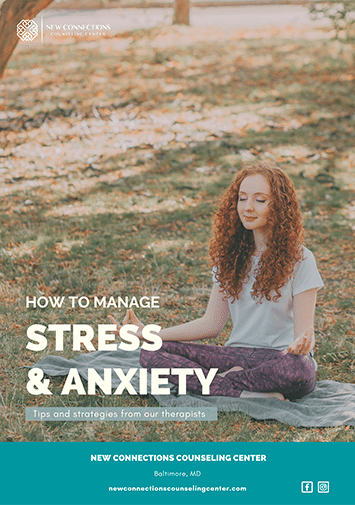Struggling to set healthy boundaries with your partner? Whether you believe your feelings aren’t as important, fear you’re being unreasonable, or have a hard time saying “no”, here are 5 useful tips to make it all clearer and help you set healthy relationship boundaries.
We get it, it’s tough to stand up for your own needs or even recognize them. You might feel obligated to please your partner to avoid the fear of rejection or abandonment. You might also feel uncomfortable with something unexpected they’ve done and unsure of how to address it.
Boundaries can be a tough cookie to crack, especially in relationships, where there’s an expectation for it to be perfect, believing love should be unconditional. Couples often worry they’re going to ruin things by causing a stir.
It couldn’t be further from the truth: communicating clear boundaries and expectations is crucial in a balanced and healthy relationship, assuring your identity and emotional well-being.
What Are Relationship Boundaries?
Relationship boundaries are guidelines that help you define what makes you feel comfortable and what is acceptable behavior for you. They protect you physically and psychologically, fostering mutual respect and support.
Having no established limits can harm your relationship and well-being, leading to stress, anxiety, depression, or a toxic or abusive relationship. Persistent boundary issues can also lead to losing significant relationships.
Healthy boundaries in relationships go together with self-esteem, trust, and communication. Their absence or violation can stem from or cause issues such as lack of trust, fragile self-esteem, or resentment.
Thus, discussing and honoring personal limits is crucial for couples, as it strengthens their emotional bond and increases relationship satisfaction.
Healthy vs. Unhealthy Boundaries in a Relationship
Overall, there are 3 key points you should know about boundaries:
1. They shouldn’t be used to control your partner or vice versa;
2. They shouldn’t be too rigid or too loose to avoid pushing your partner away or being taken advantage of;
3. Boundaries are ever-changing and require continuous discussion and adjustment.
Effective boundaries should respect each other’s needs, be clear, reasonable, and realistic, and should never be based on guilt, shame, or wanting to please others. They should help redirect the focus towards a solution, instead of centering around the problem.
So, what is considered a healthy relationship boundary, and what could, in turn, be a damaging one? Here are a couple of examples.
Examples of healthy boundaries in relationships
- Communicating about your preferences on physical touch, both sexual and non-sexual forms of intimacy;
- Compromising on how much time you spend together, or how frequent your communication should be;
- Respecting each other’s opinions, feelings, and differences;
- Finding support outside the relationship, providing space for autonomy, and avoiding codependency.
Examples of unhealthy boundaries in relationships
- Poor communication: “silent treatment,” passive-aggressiveness, or yelling;
- Disrespect: manipulating, damaging your self-esteem, making you feel inferior or judged, criticizing or lying to you;
- Violating your privacy: snooping on your phone, contacting your friends behind your back, constantly demanding to know where you are and what you’re doing;
- Controlling what you wear, where you go, and who you see.
5 Tips to Set and Maintain Healthy Boundaries in Your Relationship
1. Know yourself and your boundaries
Take a moment to truly think about what’s important to you, who you want to be in a relationship, what you’re looking for in a partner, and what your expectations are.
Reflecting on who you are and what you value in a relationship is important to determine your personal boundaries.
2. Communicate your needs clearly
Good communication is the foundation for a healthy relationship. Discuss your feelings and thoughts with your partner in an honest, respectful way. Use “I” sentences instead of directing the blame to your partner. For example, “I feel hurt when you do this” instead of “You always do this! You really don’t care about me”.
Similarly, listen to what your partner has to say for a better understanding of their perspective.
3. Respect your partner’s boundaries and your own
You both deserve to feel heard, understood and validated. If your needs aren’t being met, revisit the conversation to reinforce your boundaries and remind your partner why you value these terms.
In the same way, be accountable for your actions and actively engage in reminding yourself of the boundaries that matter to them.
4. Check in on your relationship boundaries together
Regularly circle back to the conversation about boundaries. Review together if needs are being met, and if any boundaries have changed or been crossed.
Understanding how you can both work on improvements can create a lasting impact on your trust, communication, and emotional bond.
5. Seek help from a couples therapist
If you feel you’re having difficulties setting boundaries and compromising as a couple, consider starting couples therapy.
A couples counselor will help you identify your needs, establish and enforce your boundaries, determine the consequences for their violation, and effectively communicate with each other.
Start Couples Therapy In Baltimore, MD
Whether you’re struggling to maintain clear boundaries in your relationship or just looking to improve your connection, we’ve got you covered! Our Baltimore couples therapists can help you assertively express your needs and work together to create a foundation of trust and respect!
Talk to us to know more, or schedule a free 15-minute consultation here.






